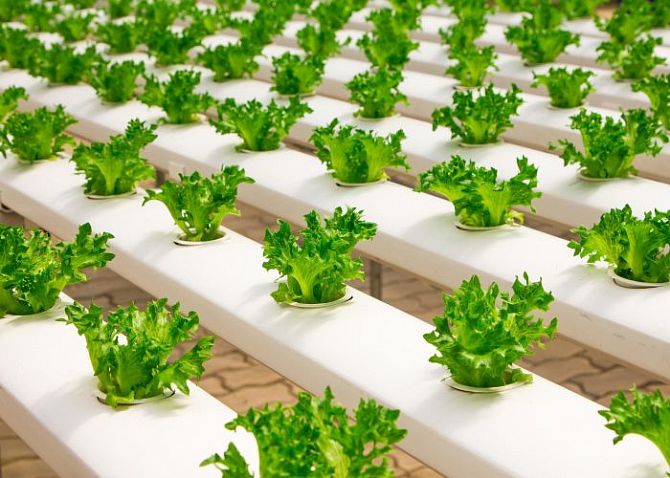
Hydroponics explained
The innovative technology of hydroponics is said to promote faster growth, higher yields, and greater quality. Plants that grow in the soil have to constantly expend energy to extract the most important nutrients from the soil. If, on the other hand, the plant comes into direct contact with the nutrient-rich water, this energy can be saved and used for the maturation of the plant instead.
But how exactly do hydroponic farming methods work? First and foremost, they are so efficient because the environmental conditions such as temperature, pH balance and a nutrient-rich supply can be optimally controlled. The plants thus get exactly what they need. The nutrient solutions are therefore precisely tailored to the respective plant. Constant control also reduces many risk factors. Diseases, pests, and pesticides are no problem in hydroponic systems. The plants can not only grow faster this way but also produce higher quality and healthier yields.
On the whole, it sounds great, doesn't it? There are definitely numerous advantages to this cultivation technique, such as:
- With this cultivation technique you only need little space.
- The growth of the plants can be optimally promoted by controlling the light, the temperature and the water and nutrient supply.
- With hydroponics, you can grow vegetables all year round.
- The roots are not as susceptible to rotting - unlike in the soil.
- The plants do not need to be watered daily as the nutrient solution lasts longer.
- You don't have to weed.
However, the technology also brings some disadvantages:
- Most hydroponic systems are made of plastic.
- Hydroponic systems usually only work with electricity.
- Fertilisers are needed for the nutrient solution. Chemical fertilisers can also be used in some cases.

CBD & Hydroponics
CBD-rich cannabis plants can also be grown using the hydroponic method. The tailor-made supply and optimal conditions ensure fast growth and high quality of the cannabis plant. Often, coco fibre is added to the cannabis plant instead of soil. Although these do not contain any nutrients, they serve to stabilise the roots of the plants. However, there might be one disadvantage: Cannabis plants that grow in nature are naturally surrounded by fungi, other plants and microorganisms. These can add a natural flavour to the plant when they interact with the roots of the crop. The flavour of the end product may therefore be less intense with the hydroponics method.

History of Hydroponics
The first findings of hydroponic plant cultivation date back to 600 BC. According to tradition, the well-known Hanging Gardens of Babylon formed the first model of the hydroponic system. The floating gardens in China, discovered in 1275, were also a forerunner of today's hydroponic systems. The foundation for today's hydroponic method of cultivation is a researcher's finding from 1699 which indicated that plants use water to dissolve nutrients from the soil. Building on this, the first water-soluble fertiliser was invented in 1860. In 1940, the researcher Dr. Gericke demonstrated that hydroponic techniques, which had previously only been used in the laboratory, could also be implemented in commercial agriculture. Since then, the development of new hydroponic systems has gathered pace. Currently, the global hydroponic market is estimated at 21 billion US dollars. Europe is the largest market, followed by the Pacific-Asian market. The largest hydroponic farm in Europe is currently located in Dronten, the Netherlands.

Good to know about Hydroponics
Even NASA and other international space agencies are experimenting extensively with hydroponics. Why do you ask? Well, this form of cultivation could be an important opportunity for growing food in space. Because hydroponics requires no soil and 90% less water, it is ideal for astronauts who will need to grow their own food on future missions. Exciting, isn’t it?




